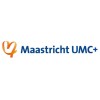
Impact of Text Messaging in the Management of Non-alcoholic Fatty Liver Disease
NAFLD and NASHThis randomized study aims at examining the impact of text messaging in the management of non-alcoholic fatty liver disease (NAFLD) and non-alcoholic steatohepatitis (NASH), a disease frequently associated with obesity and varying components of metabolic syndrome including diabetes mellitus, hypertension, and dyslipidemia. With rising incidence of obesity in the US, NAFLD and NASH are rapidly increasing with currently the second etiology for liver transplantation in the US. The objectives of this protocol are to a) prospectively enroll patients with NAFLD and NASH; b) randomize them to receiving text messaging to help manage obesity and other components od metabolic syndrome in addition to standard clinical care or receiving only standard clinical care; and c) follow up these patients at the end of 3 months period for weight loss, blood pressure control, HBA1c, and liver enzymes. The immediate aim of this protocol is to develop the pilot data on the usefulness of text messaging in the management of NAFLD and NASH. The long-term goals of this research are to establish text messaging as a beneficial intervention in the management of weight loss and control of risk factors of NAFLD and improve outcomes of these patients with NAFLD and NASH.

Inspiratory Muscle Training Post-Liver Transplant
Liver Disease ChronicMuscle Weakness1 moreIndividuals with chronic liver disease develop significant muscle wasting that remains post-liver transplant. The transplant surgery additionally challenges respiratory mechanics. Respiratory muscle strength has been measured to be impaired in individuals post liver transplant. This study proposes an 8 week intervention designed to increase respiratory muscle strength and pulmonary function that we hypothesize will correlate to improved functional performance and quality of life post-liver transplant. Pre-test post-test design, that will randomize subjects into an experimental group that will receive the inspiratory muscle strengthening exercise in addition to usual post-liver transplant care and a control group that will only receive the usual post-transplant care. Up to 50 subjects will be recruited from the Post-Liver Transplant Outpatient Clinic at the Miami Transplant Institute. The subjects will have repeated measurements of respiratory muscle strength, pulmonary function, functional mobility performance, and quality of life at baseline, 4 weeks, and 8 weeks.

FibroScan™ in Pediatric Cholestatic Liver Disease (FORCE)
Biliary AtresiaAlagille Syndrome4 moreNoninvasive monitoring of liver fibrosis is an unmet need within the clinical management of pediatric chronic liver disease. While liver biopsy is often used in the initial diagnostic evaluation, subsequent biopsies are rarely performed because of inherent invasiveness and risks. This study will evaluate the role of non-invasive FibroScan™ technology to detect and quantify liver fibrosis.

A Randomized Controlled Trial Comparing Band Ligation and Cyanoacrylate Injection for Esophageal...
Liver DiseaseCompare VBL and cyanoacrylate injection (CI) in the treatment of EV in patients with advanced liver disease regarding eradication, bleeding, mortality, complication and recurrence rates.

Surgical Recovery After Left Lateral Hepatic Sectionectomy: Laparoscopic Versus Open Surgery.
Colorectal CancerLiver Metastasis1 moreThe ORANGE II trial is a double blinded randomised controlled trial that will provide evidence on the merits of laparoscopic surgery in patients undergoing a left lateral hepatic sectionectomy in terms of time to functional recovery, hospital length of stay, quality of life, readmission percentage, morbidity and mortality, hospital costs, body image and cosmesis, and long term incidence of incisional hernias.

Pioglitazone vs Vitamin E vs Placebo for Treatment of Non-Diabetic Patients With Nonalcoholic Steatohepatitis...
Liver DiseasesThe purpose of this study is to determine if therapy with pioglitazone or vitamin E will lead to an improvement in liver histology in non-diabetic adult patients with non-alcoholic steatohepatitis (NASH).

Patient and Physician Perspectives on Non-Alcoholic Fatty Liver Disease
Nonalcoholic Fatty Liver DiseasePhysicianThis trial studies patient and physician perspectives on non-alcoholic fatty liver disease. Using questionnaires and interviews, this trial may help researchers understand physicians' knowledge about the diagnosis, prognosis, treatment and management of non-alcoholic fatty liver disease, as well as gain an in-depth understanding of Hispanic patients' perceptions about the disease and investigate how cultural factors may play a role in its diagnosis, treatment and management.

Study to Evaluate the Pharmacokinetics, Safety, and Tolerability of Seladelpar in Subjects With...
Hepatic ImpairmentThis Phase 1 open label study is being conducted to directly characterize the pharmacokinetic (PK) profiles of seladelpar following administration of a single oral dose in subjects with varying degrees of hepatic impairment (HI) compared to healthy matched control subjects with normal hepatic function.

The BRAINFOOD Trial to Prevent Recurrent Hepatic Encephalopathy.
CirrhosisAscites4 moreThis study is being completed for patients with cirrhosis, including patients with a prior history of hepatic encephalopathy (HE) to evaluate the feasibility and benefits of medically-tailored meals as an intervention. Patients will be enrolled from the University of Michigan and will complete the baseline assessments in-person or remotely. In addition participants will complete study related materials before, during and after treatment with medically-tailored meals (MTM). After completing the study meals, participants will return for follow-up or have this visit completed remotely as well as have an observational period for 12 more weeks.

Study of Clinical Features of Patients With Autoimmune Liver Disease Complicated With Covid-19 and...
Autoimmune Liver DiseaseCOVID-19With the decreasing virulence of omicrons strain, the current domestic epidemic prevention policy has been changed based on the health of the people and the development needs of the country. At present, the infection rate of the novel coronavirus in China is rising rapidly. Previous studies have found that patients with chronic liver disease are more likely to be co-infected with coronavirus disease 2019 and have a worse prognosis. Based on its unique immune mechanism and therapeutic drugs, patients with autoimmune liver disease also have very different manifestations after infection with the novel coronavirus. By observing the clinical characteristics and prognosis of patients with autoimmune liver disease complicated with coronavirus disease 2019, this study analyzed the roles of vaccines, immunosuppressive agents and ursodeoxycholic acid , and explored the immune mechanism behind them, so as to seek new anti-coronavirus disease 2019 drugs and provide new strategies for clinical prevention and treatment.
